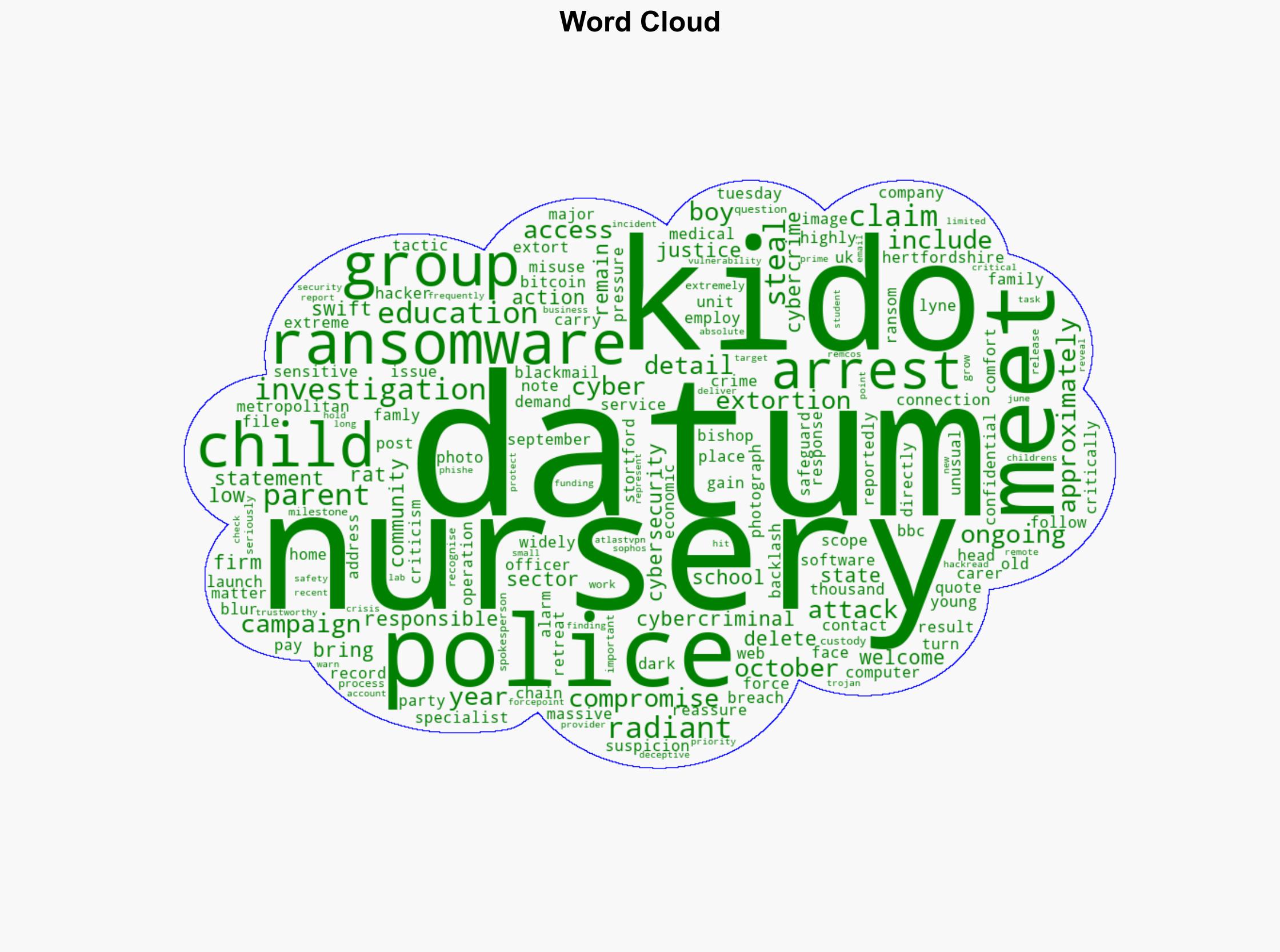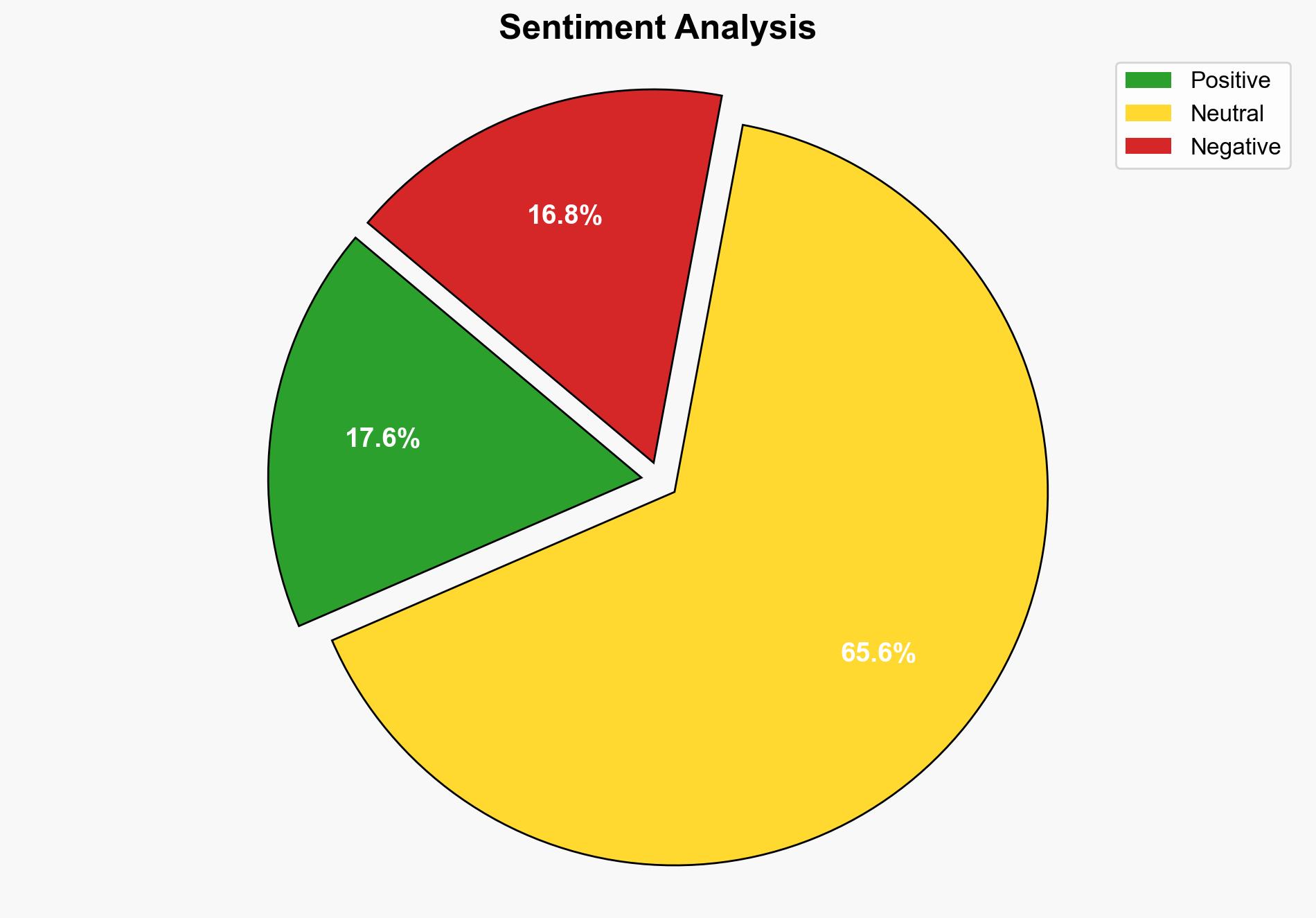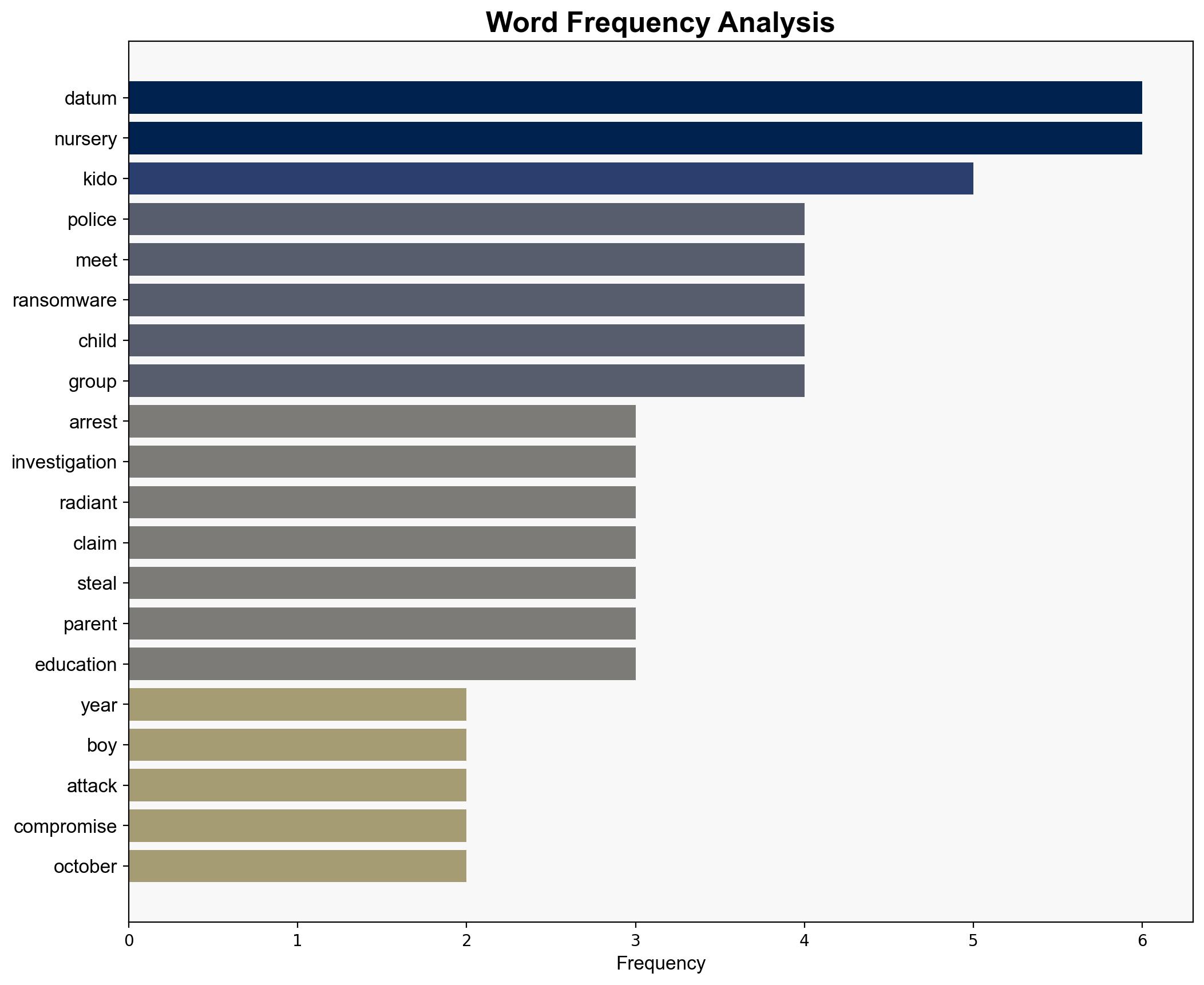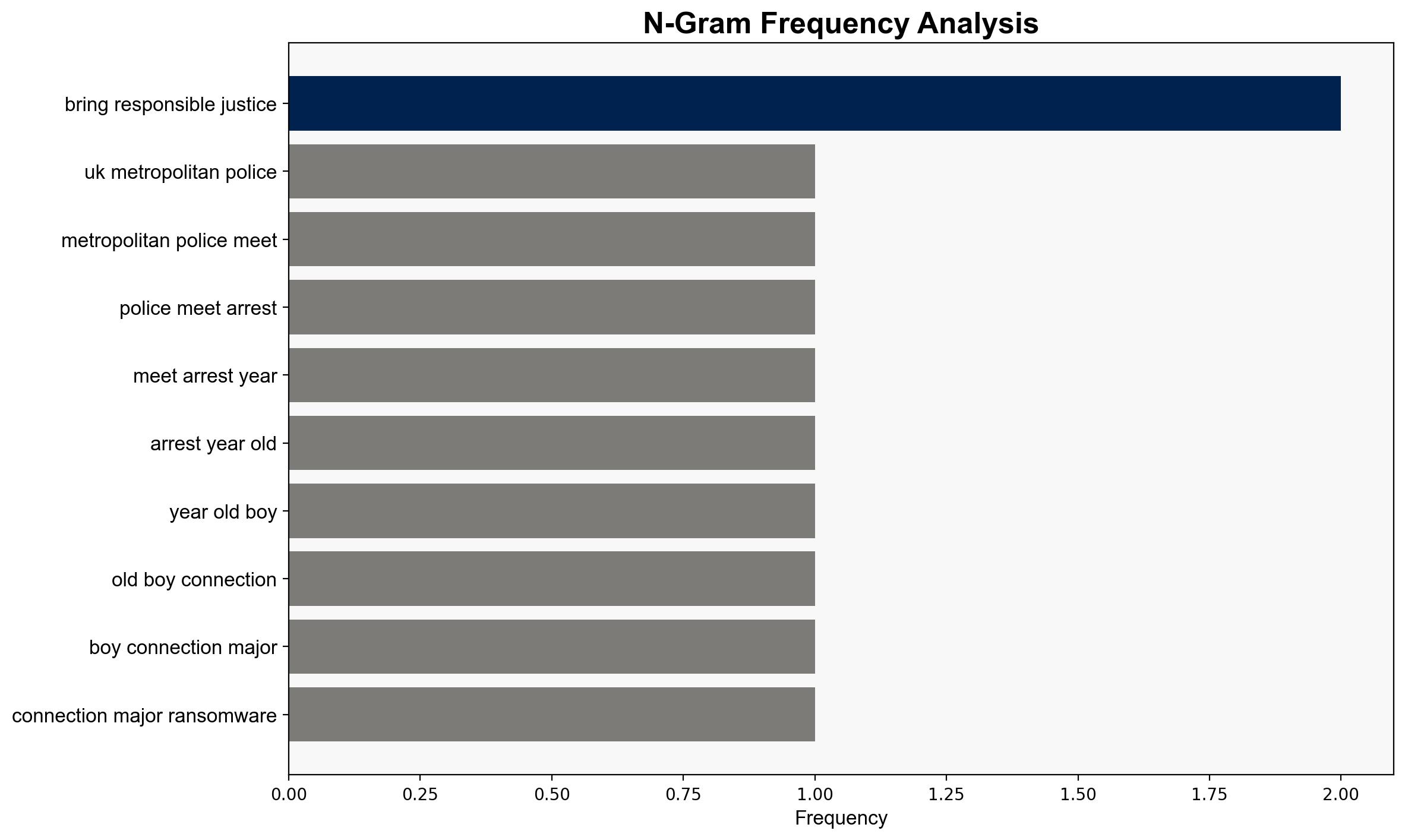UK Police Arrest Two Teens Over Kido Nursery Ransomware Attack – HackRead
Published on: 2025-10-08
Intelligence Report: UK Police Arrest Two Teens Over Kido Nursery Ransomware Attack – HackRead
1. BLUF (Bottom Line Up Front)
The most supported hypothesis is that the ransomware attack on Kido Nursery was primarily an opportunistic crime by inexperienced actors rather than a sophisticated, targeted operation. Confidence level is moderate due to limited information on the attackers’ capabilities and motivations. Recommended action includes enhancing cybersecurity measures in educational institutions and conducting awareness campaigns.
2. Competing Hypotheses
Hypothesis 1: The attack was an opportunistic crime by inexperienced actors seeking financial gain without a clear understanding of the consequences.
– **Supporting Evidence:** The arrest of two teenagers suggests a lack of sophistication typically associated with high-level cybercriminal operations. The attackers’ retreat and deletion of data after backlash indicate possible inexperience or fear of repercussions.
Hypothesis 2: The attack was a deliberate and targeted operation by a more organized group using the teenagers as proxies.
– **Supporting Evidence:** The use of ransomware and direct contact with parents for extortion suggests a level of planning and intent. The involvement of a known ransomware group, Radiant, could imply a broader network or influence.
3. Key Assumptions and Red Flags
– **Assumptions:** Hypothesis 1 assumes the teenagers acted independently and were not part of a larger network. Hypothesis 2 assumes a connection between the teenagers and a more organized group.
– **Red Flags:** Lack of detailed information on the teenagers’ backgrounds and the extent of their technical skills. The rapid deletion of data could be a deception tactic to mislead investigators.
– **Inconsistent Data:** The claim of data deletion lacks independent verification, raising questions about the true extent of data compromise.
4. Implications and Strategic Risks
– **Patterns:** The attack highlights vulnerabilities in the education sector, which is often underfunded and lacks robust cybersecurity measures.
– **Cascading Threats:** Successful attacks on educational institutions could encourage similar future attempts, exploiting perceived weaknesses.
– **Potential Escalation:** If linked to a larger network, there could be a risk of more coordinated attacks targeting sensitive data across sectors.
– **Economic and Psychological Dimensions:** The breach could lead to financial losses for affected families and institutions, and erode trust in digital educational platforms.
5. Recommendations and Outlook
- Enhance cybersecurity protocols in educational institutions, focusing on data protection and incident response.
- Conduct cybersecurity awareness campaigns targeting both staff and parents to recognize and mitigate phishing attempts.
- Scenario-based Projections:
- Best Case: Improved cybersecurity measures prevent future attacks, and trust in educational platforms is restored.
- Worst Case: Continued vulnerabilities lead to repeated breaches, causing significant financial and reputational damage.
- Most Likely: Incremental improvements in cybersecurity reduce but do not eliminate the risk of future attacks.
6. Key Individuals and Entities
– The two teenagers arrested in connection with the attack.
– The ransomware group Radiant, which claimed responsibility for the breach.
– Kido Nursery, the affected institution.
7. Thematic Tags
national security threats, cybersecurity, counter-terrorism, regional focus




